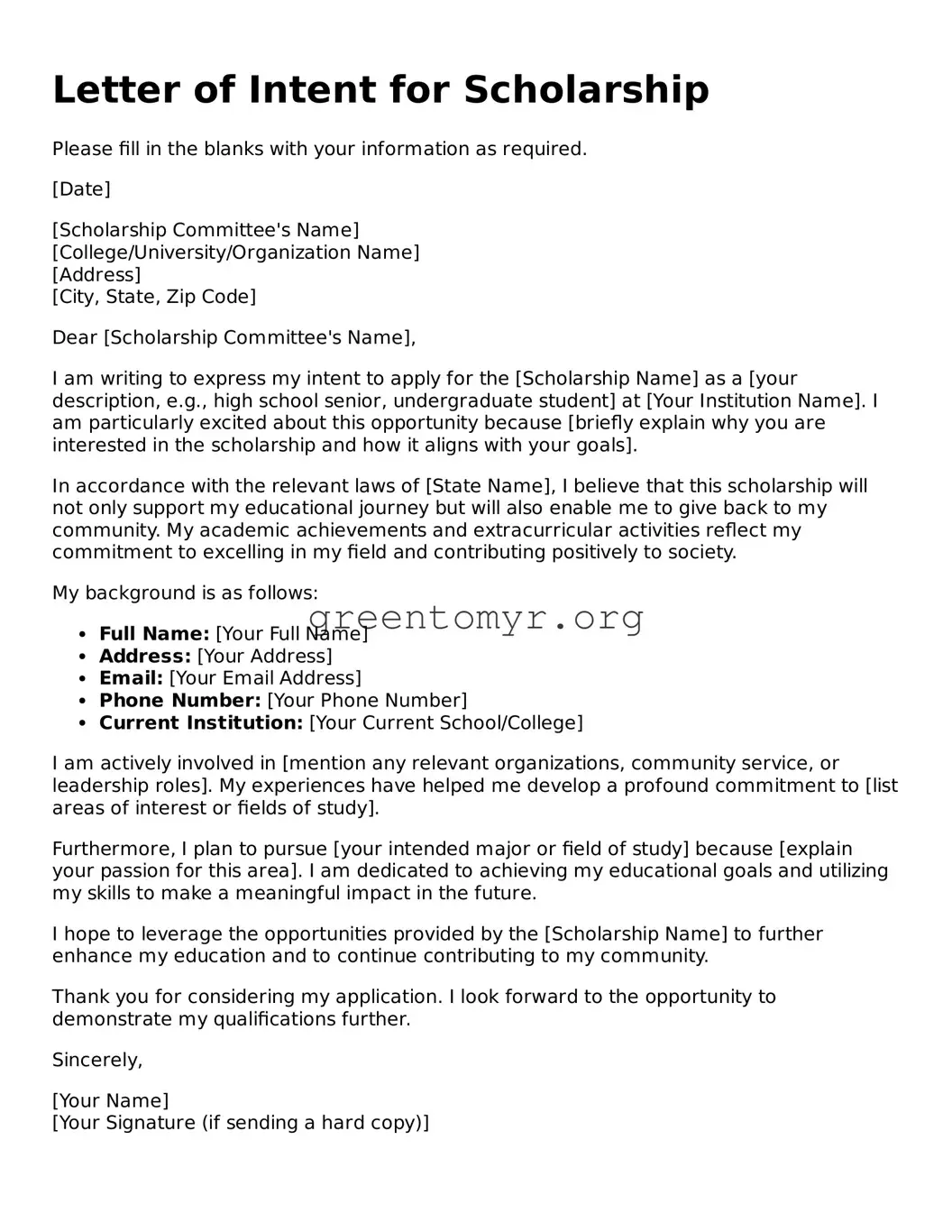Letter of Intent for Scholarship
Please fill in the blanks with your information as required.
[Date]
[Scholarship Committee's Name]
[College/University/Organization Name]
[Address]
[City, State, Zip Code]
Dear [Scholarship Committee's Name],
I am writing to express my intent to apply for the [Scholarship Name] as a [your description, e.g., high school senior, undergraduate student] at [Your Institution Name]. I am particularly excited about this opportunity because [briefly explain why you are interested in the scholarship and how it aligns with your goals].
In accordance with the relevant laws of [State Name], I believe that this scholarship will not only support my educational journey but will also enable me to give back to my community. My academic achievements and extracurricular activities reflect my commitment to excelling in my field and contributing positively to society.
My background is as follows:
- Full Name: [Your Full Name]
- Address: [Your Address]
- Email: [Your Email Address]
- Phone Number: [Your Phone Number]
- Current Institution: [Your Current School/College]
I am actively involved in [mention any relevant organizations, community service, or leadership roles]. My experiences have helped me develop a profound commitment to [list areas of interest or fields of study].
Furthermore, I plan to pursue [your intended major or field of study] because [explain your passion for this area]. I am dedicated to achieving my educational goals and utilizing my skills to make a meaningful impact in the future.
I hope to leverage the opportunities provided by the [Scholarship Name] to further enhance my education and to continue contributing to my community.
Thank you for considering my application. I look forward to the opportunity to demonstrate my qualifications further.
Sincerely,
[Your Name]
[Your Signature (if sending a hard copy)]
